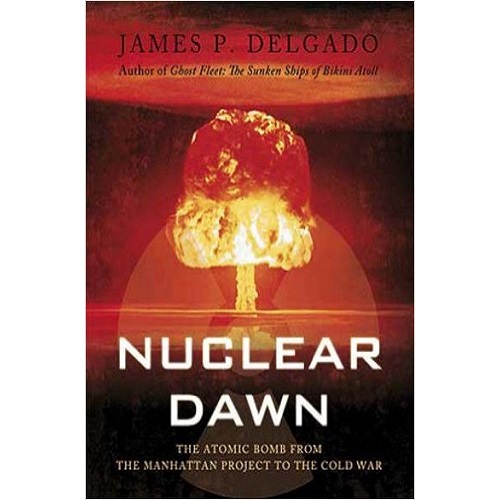Description
Nuclear Dawn: From the Manhattan Project to Bikini Atoll by James P. Delgado
When President Obama and others say they want to end America’s dependence on foreign oil, the vision is usually presented in terms of “a new Manhattan Project.” So what really was the Manhattan Project? According to James Delgado, at the start of the project in 1942, the element plutonium only existed in microscopic quantities.
By June 16, 1945, the date of the world’s first nuclear bomb test, America had a fully-operational plutonium industry capable of producing hundreds of pounds of the fissionable material. In just three short years, nuclear weapon technology had progressed from infancy to the world stage.
Delgado, the co-host of the National Geographic Television series “The Sea Hunters,” tells the breathtaking story of the original Manhattan Project and its aftermath. While most previous authors have focused on either the scientific or the social history of the events, Delgado’s is the first to spotlight the military and political phases of the atom bomb. In crisp prose, he covers the background of the bomb in the labs in Europe, Britain, and America, but the story picks up speed after the bombing of Pearl Harbor and the declaration of war by America.
While most people recognize Robert Oppenheimer as the father of the bomb, readers of Nuclear Dawn will be surprised to learn that gave birth more in the sense that Henry Ford gave birth to the auto industry. In Delgado’s narrative, Oppenheimer’s role as master organizer and astute business manager is emphasized.
What’s more, few before Delgado have understood how deeply involved the US Army was in the project. From the very beginning, the program was run by army officers, financed by secret wartime military funds–to the tune of billions of dollars, staffed by army engineers and scientists, and made possible by army bureaucracy. Delgado also shows that without the army’s ordnance expertise at Los Alamos, Oppenheimer’s team could not have turned nuclear technology into a workable bomb.
Several other unique aspects of Nuclear Dawn turn on the military’s role in the project. For example, Delgado tells the full story of the army air force’s 509th fighter battalion, which was headed by an iconoclastic colonel named Paul Tibbets. Tibbets’ battalion consisted of over 1,200 pilots and crew dedicated to a singular task: delivering an atomic bomb to Japan. Delgado tells how as part of their training, the Utah-based crews would fly practice sorties to Cuba and back, over and over again.
Another little-known aspect of the Manhattan Project drawn out be Delgado is the post-war bickering that quickly arose between the army and navy over who would control the bomb. James Delgado’s new book fills a very important gap in our understanding of the enormous changes that the United States military underwent during WWII.
- Hardcover: 216 pages
- Publisher: Osprey Publishing
- Language: English
- ASIN: B004JZWMFI
- Product Dimensions: 7.8 x 0.9 x 9.8 inches







